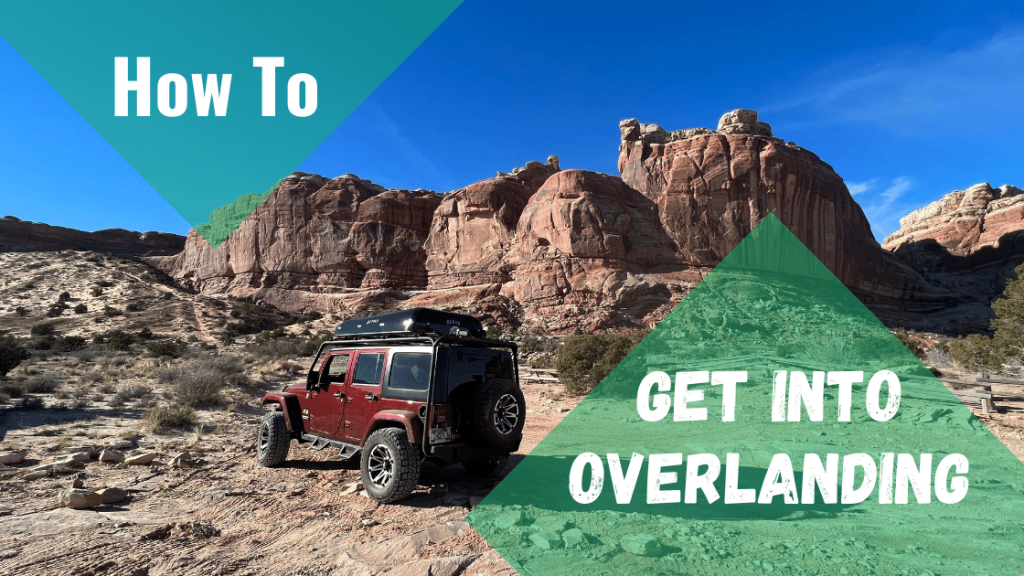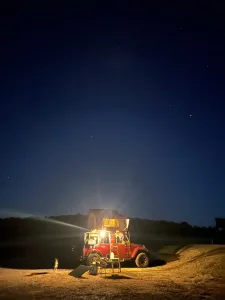
Looking for how to get into overlanding? You’ve come to the right place!
Overlanding, at its core, embodies the spirit of self-reliant adventure travel. The term should conjure images of off-roading through rugged terrains, setting camp in remote places, and truly immersing oneself in nature. If you’ve ever been tempted to take on an overland trip, you’re not alone. The appeal of self-sufficient adventures has attracted countless adventure seekers. But as any seasoned overlanding enthusiast will tell you, taking off on your first overlanding trip requires preparation, the right gear, and a sense of adventure.
Getting Started in Overlanding
Distinct from a quick weekend trip or a regular car camping experience, overlanding is about vehicular journeying, predominantly off-road, over extended periods, ranging from days to even weeks or months. Unlike the short-lived thrill of off-roading, overlanding is a blend of the journey and the destination. It’s about exploration, rather than just the challenge of conquering tough terrains.
On an overland camping trip, the vehicle plays a dual role. It’s not just your means of transportation but also your primary shelter. This is where the concept of overland camping comes in – where you make camp wherever you find yourself at dusk!

Overlanding Essentials
Embarking on an overlanding adventure is not a spur-of-the-moment decision but a calculated endeavor that revolves around meticulous preparation. While gearing up with the right equipment is paramount, the choice and condition of your vehicle are equally critical.
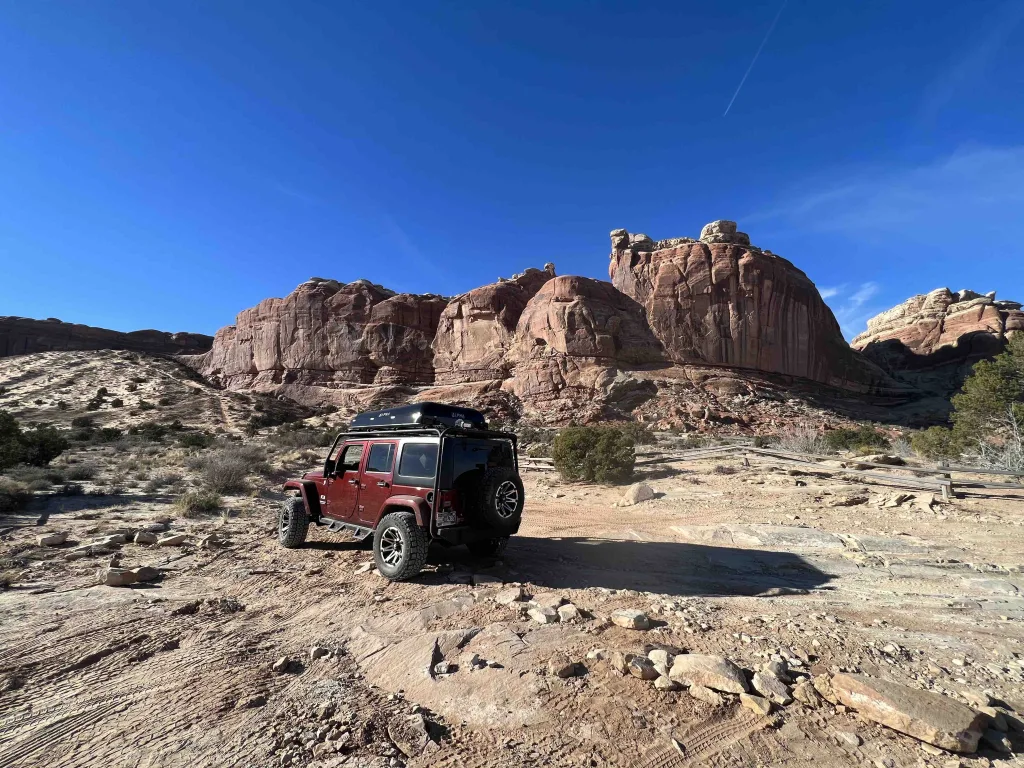
Selecting the Overlanding Vehicle
Vehicles with all-wheel (AWD) or four-wheel drive (4WD) are typically favored in overlanding for their increased traction, especially on challenging terrains. These drivetrains provide better performance, power distribution, and stability, which are essential for uncertain terrains.
Vehicle Ground Clearance
A vehicle’s ground clearance, the distance from the base of the tires to the lowest point of the vehicle’s undercarriage, and its crucial. Adequate clearance allows your vehicle to pass over obstacles without getting stuck or causing damage. While minimal clearance might suffice for tamer roads or trails, more popular overlanding terrains demand higher clearances.

Route Mapping and Navigation
A trip’a success often hinges on the accuracy of your planning. With the possible limitation of cell services in remote areas, it’s prudent to rely on dedicated navigation apps and traditional maps. Knowledge of the area, understanding terrains, and being prepared for detours can make the difference between an enjoyable adventure and a perilous ordeal.I use ONX Offroad for all my overland planning.
Safety
Beyond just knowing the trail, it’s important to have knowledge to keep you and your team safe on your journey. This might involve understanding the local wildlife, having a comprehensive first aid kit, and/or being aware of the weather changes that could affect your journey.
Understanding Off-Roading Levels:
Beginner Terrain: This level is mostly about gravel paths, dirt trails, and rocky roads that remain relatively even. The challenge here is minimal, with rocks or obstacles not extending more than 5 inches from the ground. It’s an introduction to off-roading, offering a taste of the adventure without significant risks.
Intermediate Terrain: At this level, the challenges increase. The terrain is often dominated by boulders that may protrude over 12 inches from the surface. These obstacles demand careful navigation, requiring drivers to steer around or expertly maneuver their vehicle to avoid damage. Features like mud ruts and occasional water crossings add to the complexity.
Advanced Terrain: Reserved for the seasoned adventurer, this level throws everything at the participant. The trails can have deep mud trenches, massive rocks, or even river crossings. The terrain is unpredictable, requiring skill, experience, and a vehicle equipped to handle such challenges. It’s never recommended to take on advanced overlanding train alone.
Gearing Up: Best Overlanding Gear Essentials
Gearing up correctly can make all the difference in your overlanding adventures. Here’s a general idea of the best overlanding gear that should form the core of your overlanding kit:
Vehicles

Your vehicle choice is paramount. Wranglers, Trucks, & 4WD SUVs are a popular choice among overlanding enthusiasts. Still, any reliable vehicle with good clearance and preferably four-wheel drive will suffice. While a sturdy vehicle is a must, the newer overlanding vehicles come equipped with modern amenities, making the trip more comfortable.
Roof Rack
Roof racks are invaluable for efficiently utilizing the space on your vehicle. Not only can they accommodate essentials like awnings and shovels, but they also provide a stable platform for mounting a rooftop tent. However, it’s crucial to ensure that the chosen roof rack or crossbars have the capacity to bear the combined weight of the rooftop tent and its occupants safely.
Sleeping Gear
A rooftop tent is often the go-to choice for overlanders. They’re easy to set up and offer a comfortable sleeping space off the ground. Paired with comfortable sleeping bags suitable for weather conditions you’ll be facing, and you’re set for a restful night.

Recovery Gear
You should always be prepared for sticky situations. Recovery gear, such as a tow strap, tire repair kit, air compressor, and jumper cables, can help you get out of most binds.
Navigation
While many rely on GPS, having a paper map and understanding your exact route can be indispensable, especially in remote areas where digital signals might be unreliable. I prefer ONX Offroad for my GPS device. I will usually have a local guidebook in my car for redundancy.
First Aid
A comprehensive first aid kit is an absolute must, but equally important is knowing how to use what’s in there. Do yourself a favor and learn some basic first aid.
Water Storage & Filtration
You may need to do some research to sort out water availability on your overlanding route. I recommend carrying a large water storage device so you can go a day or two without filling up.
Camping Stove

A reliable camping stove allows adventurers to cook hearty meals, boil water, and even warm you during colder nights. It transforms a remote location into a cozy dining spot. You can enjoy a hot cup of coffee during a misty morning or a warm meal under a starlit sky. Investing in a sturdy, efficient camping stove ensures that wherever the road takes you, the comfort of a hot meal is always within arm’s reach.
I usually carry a Jetboil these days, but I’ve used the classic Coleman 2 burner in the past also.
Fuel & Maintenance
Always know where your next gas stations are and how far you can travel on your current fuel levels. Carry an extra jerry can of fuel, especially if traveling through especially remote areas.
Tools for Work on the Trail
Tools are absolutely necessary to carry. Its important to have a socket and wrenches to match every nut and bolt on your vehicle. You never know what can break on the trail, or if you’ll have cell service to call for help. In fact this happened to me in fall of 2022.
I was on my way to a known rendezvous point to meet up with friends in Moab when I suddenly lost power to the rear axle (I was running in 2WD). Upon inspection, I found my rear drive shaft had shredded the front CV joint and fallen from the transfer case. It took a lot of elbow grease and ingenuity to get the back end of the shaft out.
I didn’t have cell service, and I hadn’t passed off a radio yet, so my friends had to come searching for me. They eventually found me under my jeep working the problem (White Claw close by). I got a bit of help from a buddy pulling the shaft out, I’m not certain one person could have done it.
I made my way back to town running 4 wheel high, just depending on the front drive shaft. I was able to find a new CV joint kit for the front of the rear shaft and repair the other CV boot with a LOT of E-Tape.
Moral of the Story: Breakdowns happen and you need to know how to take care of yourself & your vehicle when it does.
Satelite Communication
If you’re headed to particularly remote places, consider investing in a satellite communication device like Spot.
Disel Heater
For those that like to venture out in the deep snow like me, a heater is clutch. I’ve spent nights on mountain peaks in Colorado in -7° Fahrenheit and been perfectly fine in my tent with my trusty diesel heater. There are some other heater options, but I don’t think any of them are quite as safe, so I can only recommend a diesel heater here.
Other Important Camping Gear
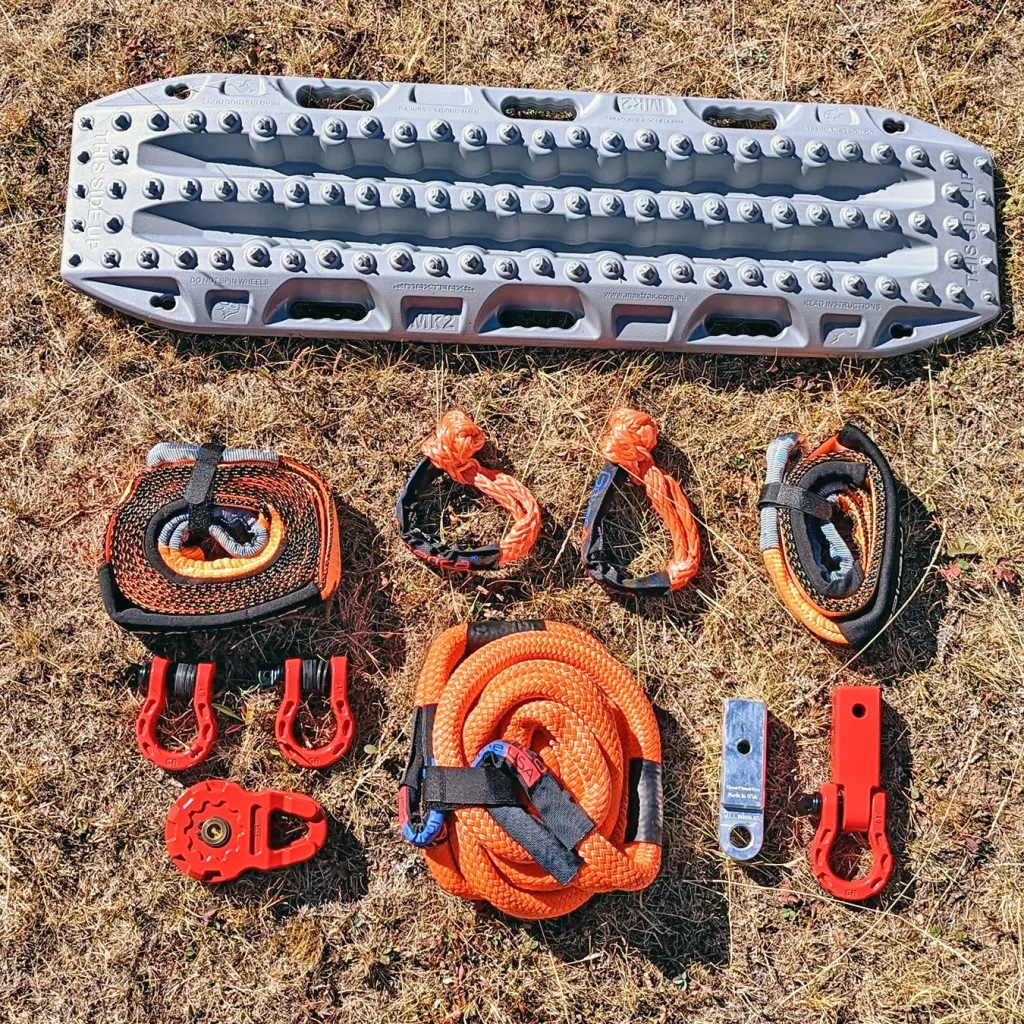
- Camping Pillow
- Cooler / Electronic Cooler
- Pots & Pans / Utensils
- Cups & Mugs
- Coffee & Tea Gear
- Table
- Camp Chairs
- Blankets
- Camp Shower or Wipes
- Portable Toilet / Trowel
- Awnings / Sun Shelters
- Radio Communication
- Power Station
- Light Sources
- Insect Repellant
- Bear Bag / Canister
- Kitchen Cleaning Supplies
- Trash Bags
- Headlamps
Off-roading Gear
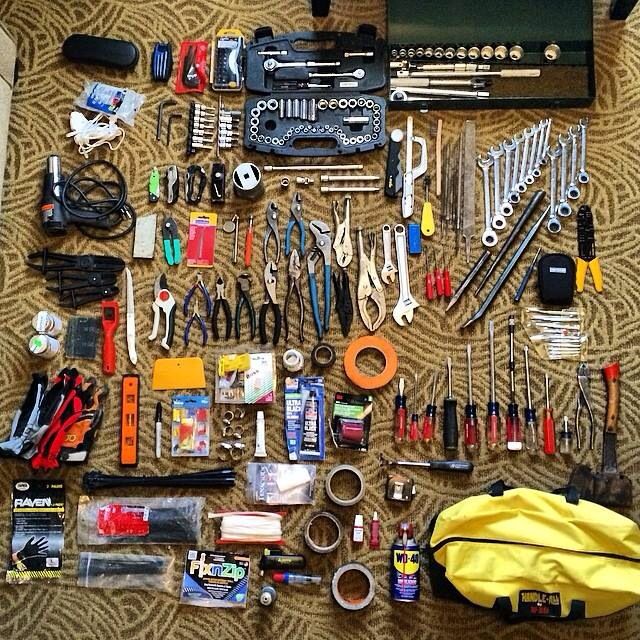
- Tool Kit Including Sockets and Ratchets
- GPS
- Jumper Cables
- Tow Straps
- Spare Tire
- Other Spares (Fuses, Engine Oil, Serpentine Belts)
- Shovel
- Tire Repair Kit
- Jack
- Leveling Blocks
- Tire Deflator
- Air Compressor
- Traction Board / Tracks
- Winch
- Fuel Cans
- Fire Extinguisher
- Dash Inclinometer
Selecting Your Destination & Route
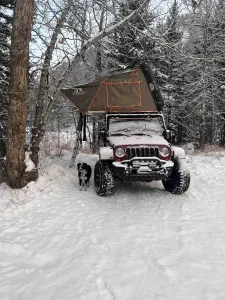
Your first overlanding adventure might not involve rock crawling in Utah or navigating the Great Sand Dunes in southern Colorado. It’s a good idea to get your feet wet with a short trip initially, perhaps a weekend trip to a nearby national forest or a scenic spot on the coast.
Overlanding on public lands like national forests offers a unique experience. They often provide “dispersed camping” opportunities, which means you can camp anywhere within certain guidelines, giving you the freedom to find that perfect spot.
Understanding the terrain is also essential. Will you be on paved roads, dirt roads, or truly off-road? Knowing this will help you prepare your vehicle and ensure you have the right gear. For example, all-terrain tires can handle both paved roads and dirt tracks, while more aggressive tires might be needed for rockier terrains.
Safety First on the Overland Trail

“Know before you go” is a principle every overlander should embrace. Before heading out, do thorough research on your chosen destination and route. Check weather conditions, especially if you’re headed to areas prone to sudden weather shifts.
A vehicle breakdown when overlanding in remote areas can be a challenging ordeal. Ensure your vehicle is in top condition and bring tons of spare parts. Also have local resources on hand, be it a nearby mechanic or a tow service.
When starting overlanding, remember the journey is as significant, if not more, than the destination. Embrace the adventure, over prepare, and you’ll find overlanding to be one of the most rewarding experiences.
Conclusion
Starting overlanding might seem daunting at first, but with the right gear and preparation, anyone can do it. Remember, the spirit of overlanding lies in self-reliant adventure. It’s about immersing yourself in the journey, enjoying nature, and testing your limits.

